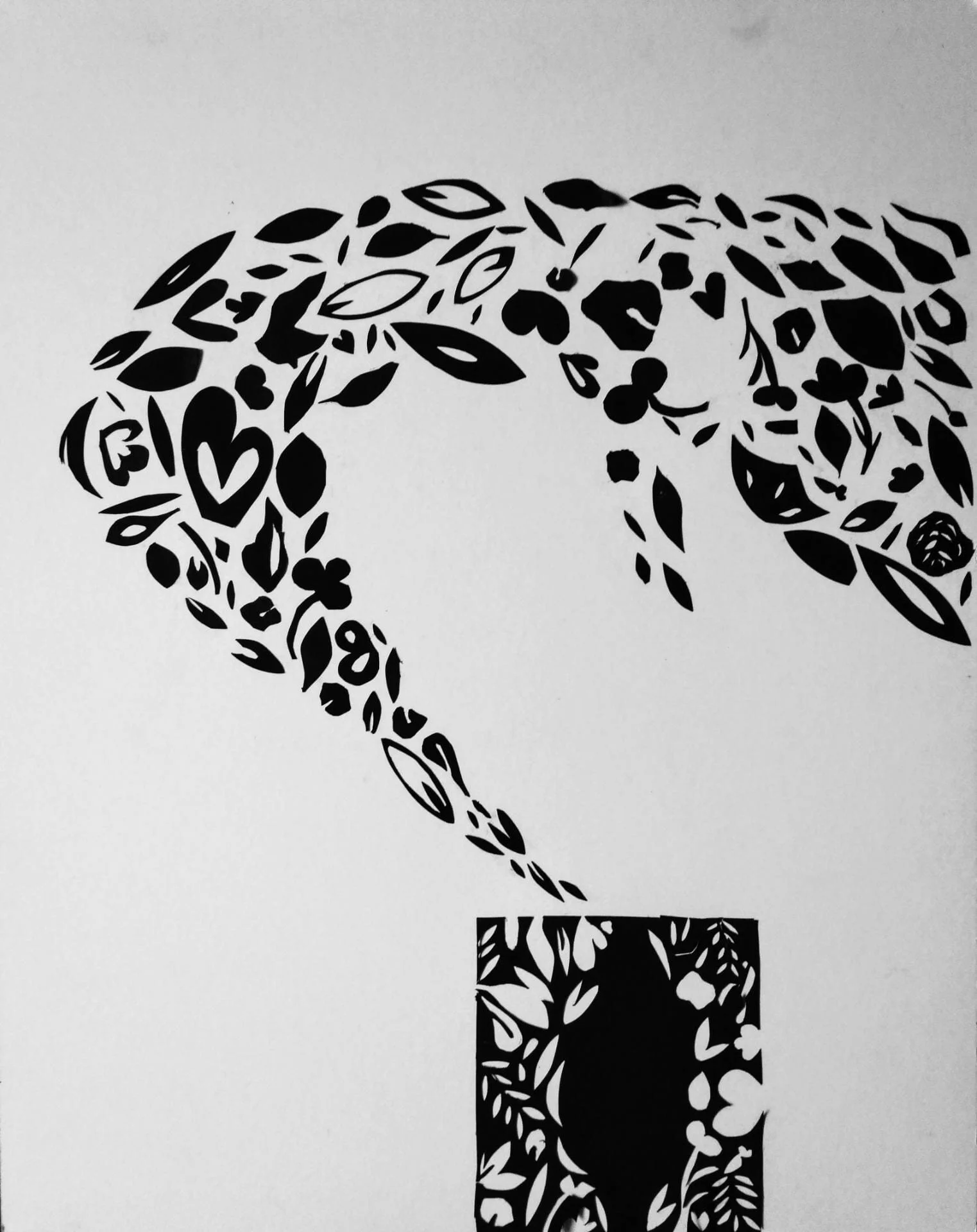Inside Out, 2019
Black paper and glue on white illustration board
***
"Pick an object," she said. One by one, everyone around the room blurted out a random object. My turn came and I said vase. I don't know why, it just came out - perhaps because that previous day my roommates and I had bought sunflowers, but we didn't have a vase to put them in.
"Great, now that's your object for your project," the teacher followed. The class gasped, heads turned, eyes widened, mouths dropped.
What was I going to do with a vase?
***
Our teacher instructed us to use only one sheet of black paper which we would cut to reveal an abstract composition that was supposed to reference our chosen object. In other words, we had to abstract our object.
My initial sketches focused on you put in vases, most commonly flowers, rather than the vase itself. In line with the idea of abstraction, I thought that the flowers themselves could create the shape of the vase, and thus have the vase itself “disappear”. Quickly, I realized this was too literal and, although the idea was interesting, it would not translate well visually. Then, I explored the idea of depicting a broken vase: I would cut out pieces to resemble shards and place them to create the basic shape of a vase - a V shape. This ended up a bit too minimalistic and bare.
I ended up going back to the idea of using the content of the vase. After a few sketches wherein I used the negative space - the paper that would not be cut out - to create the shape of the vase, I settled on creating a model of the composition, a mini format. I wasn’t going to use this model for the final piece, but I was really please with how it looked, so I decided to use it as the base of the composition. It constitutes the vase from which the cut pieces depicting leaves, flowers, and petals would pour out in a not-so-natural way.
I played around with many different compositions sometimes moving the model - tilting it or placing it in a corner - and other times I moved the pieces - either arranging them in a specific shape or "sprinkling" them haphazardly. The overarching idea was to bring the inside out - hence the title of this piece. The final composition reflects my desire to create a sense of flow while also maintaining some tension. I wanted the eye to be pleased and know where to go, while also inviting curiosity and frustration. The organic aspect is represented through the curved shape - which mimics the blow of wind - while tension is translated in the failure of the left side of the curve to fully reach the edge of the page; it almost reaches the frame but not quite, similar to how one can get frustrated when something is just out of reach. I purposefully left one area of the "wave" blank to invite the viewer's eye to rest in that space and contemplate : why is there no leaf there? Why is the hole in the middle of the other leaves? Again this is a not-so-natural intervention meant to create a dichotomy between the fluid and organic and the man-made/curated. Even though the omission of the leaf is an intentional stylistic act, the negative space thus created also reminds us of the randomness of nature. The viewer may ask himself: how did the leaves end up on the side, by jumping over the leaves on the edges?
Thus, Inside Out appears as a curated abstracted representation of a natural element. In this, I attempt to blur the boundaries between the natural and crafted, the organic and constructed.
